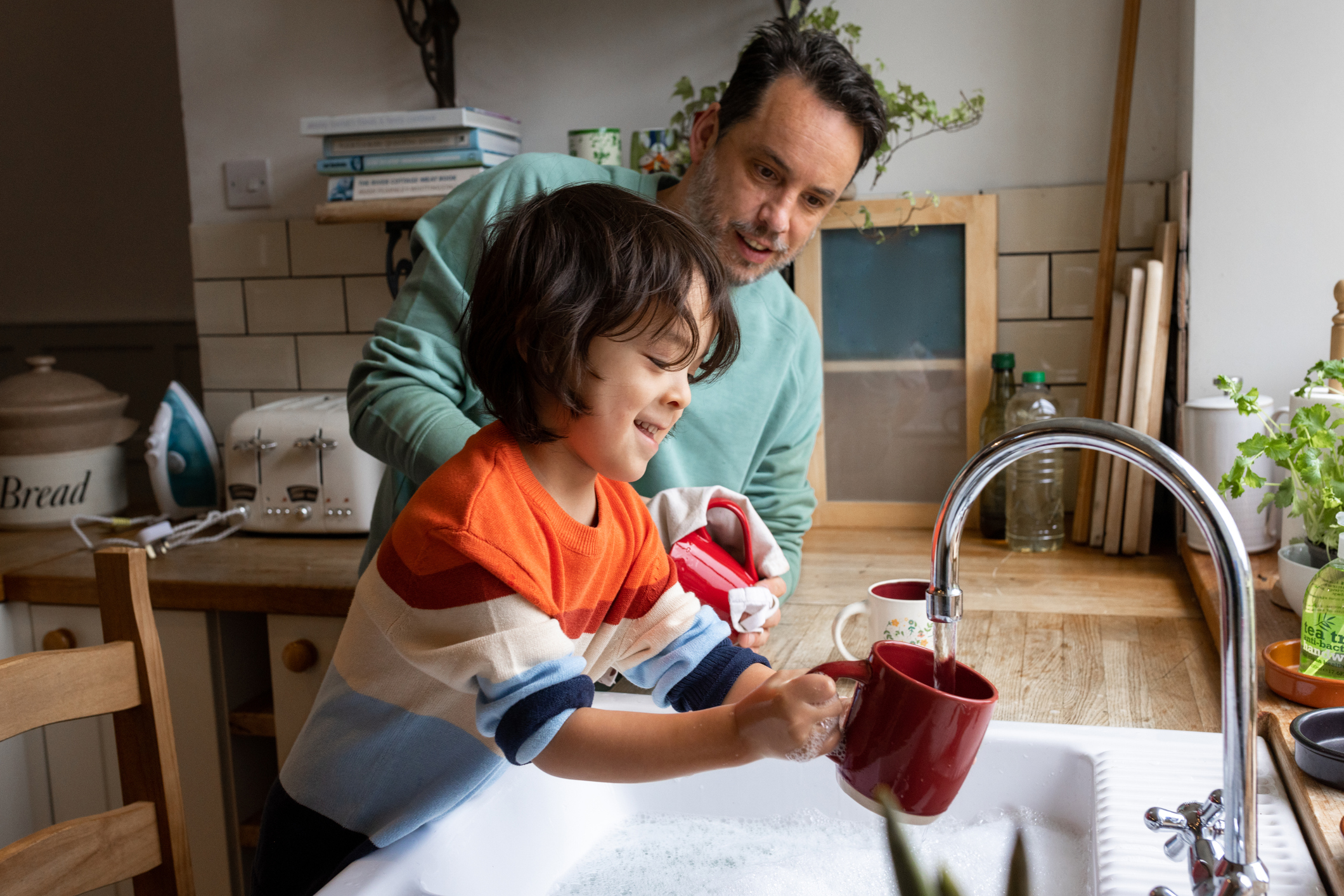Secure attachments play a crucial role in a child’s emotional and social development. They provide a foundation for healthy relationships and overall well-being. Understanding what it takes to create secure attachments is essential for parents and caregivers. One popular framework that offers valuable insights is Dan Siegel’s 4 S’s of Secure Attachments. This blog post will delve into the four key components of secure attachments: Safe, Seen, Soothed, and Secure. We will explore the significance of each S in attachment theory and how they impact child development. Additionally, we will discuss practical strategies for implementing the 4 S’s in parenting and address common challenges that may arise. By the end of this post, you will have a deeper understanding of how secure attachments contribute to long-term child development and gain valuable tools to foster secure connections with your child. So, let’s dive in and explore Dan Siegel’s 4 S’s of Secure Attachments!
Introduction to Secure Attachments and Their Importance
Secure attachments are foundational to a child’s emotional and social development. They refer to the deep emotional bonds formed between infants, children, and their primary caregivers. These attachments provide children with a sense of security, trust, and comfort, which are essential for their overall well-being.
The importance of secure attachments cannot be overstated. Research has consistently shown that children who develop secure attachments early in life are more likely to have positive outcomes in various areas of development. They tend to have better emotional regulation skills, higher self-esteem, and healthier relationships later in life.
Secure attachments serve as a secure base from which children can explore the world, take risks, and develop a sense of independence. When children feel safe and supported in their relationships, they are more likely to develop a strong sense of self and build resilience to face life’s challenges.
On the other hand, insecure attachments, characterized by inconsistent or neglectful caregiving, can have detrimental effects on a child’s development. Children with insecure attachments may struggle with emotional regulation, have difficulty forming close relationships, and experience challenges in their social interactions.
Understanding the importance of secure attachments can guide parents and caregivers in creating nurturing and supportive environments for their children. By prioritizing the development of secure attachments, we can lay the foundation for healthy emotional, social, and cognitive development in children.
In the next section, we will explore Dan Siegel’s 4 S’s of Secure Attachments, which provide a framework for understanding the key components of secure attachments and how they contribute to a child’s well-being.
Overview of Dan Siegel’s 4 S’s of Secure Attachments
Dan Siegel’s 4 S’s of Secure Attachments provide a comprehensive framework for understanding the key components that contribute to secure attachments between children and their caregivers. These four elements – Safe, Seen, Soothed, and Secure – outline the fundamental needs that must be met in order for children to develop healthy and secure relationships.
Defining the 4 S’s: Safe, Seen, Soothed, and Secure
- Safe: The first component of secure attachments is creating a safe environment for the child. This includes physical safety, such as protecting the child from harm, as well as emotional safety, where the child feels secure and protected in their relationships. When children feel safe, they are more likely to explore the world and form trusting relationships.
- Seen: Being seen means that the child’s experiences, thoughts, and emotions are acknowledged and validated. It involves active listening, paying attention, and being present with the child. When children feel seen, they develop a sense of self-worth and learn to trust that their needs and feelings are important.
- Soothed: The ability to soothe a child is crucial in building secure attachments. This involves providing comfort, reassurance, and support when the child is distressed or upset. By soothing a child, caregivers help them regulate their emotions and learn healthy coping mechanisms.
- Secure: The final element of secure attachments is creating a sense of security and predictability in the child’s relationships. This means being consistent, reliable, and available to the child. When children feel secure, they develop a sense of trust and confidence in their relationships.
The Role of the 4 S’s in Attachment Theory
Dan Siegel’s 4 S’s align with the principles of attachment theory, which emphasizes the importance of secure emotional bonds between children and caregivers. According to attachment theory, these secure attachments provide a sense of safety and support, allowing children to explore their environment and form healthy relationships.
By addressing the 4 S’s – Safe, Seen, Soothed, and Secure – caregivers can actively foster secure attachments, which have a profound impact on a child’s emotional, social, and cognitive development.
In the next section, we will delve deeper into understanding the impact of the 4 S’s on child development, exploring how each component influences various aspects of a child’s well-being.
Implementing the 4 S’s in Parenting
Implementing the 4 S’s of Secure Attachments in parenting involves creating a nurturing and responsive environment that meets the emotional needs of children. By focusing on each component – Safe, Seen, Soothed, and Secure – parents can establish strong and secure attachments with their children. Here are some practical strategies for implementing the 4 S’s in parenting:
How to Make Your Child Feel Safe
- Establish routines and consistent boundaries: Children thrive in environments that provide structure and predictability. Setting clear expectations and routines can help children feel safe and secure.
- Create a physically safe environment: Ensure that your home is childproofed and free from potential hazards. Safety measures such as using car seats, childproof locks, and secure playground equipment contribute to a child’s sense of safety.
- Provide emotional safety: Encourage open communication and create a safe space for your child to express their thoughts and emotions without judgment. Responding to their emotions with empathy and understanding helps them feel emotionally secure.
How to Make Your Child Feel Seen
- Practice active listening: Give your child your full attention when they are speaking to you. Maintain eye contact, use non-verbal cues to show interest, and reflect back on what they say to demonstrate that you are truly listening.
- Validate their experiences: Acknowledge and validate your child’s feelings and experiences. Let them know that their thoughts and emotions are important and valued.
- Engage in quality one-on-one time: Spend dedicated time with your child, engaging in activities they enjoy. This focused attention helps them feel seen and valued as individuals.
How to Soothe Your Child
- Respond sensitively to their distress: When your child is upset or distressed, offer comfort and reassurance. Use soothing words, gentle touch, and a calming presence to help them regulate their emotions.
- Help them develop self-soothing techniques: Teach your child age-appropriate strategies for self-soothing, such as deep breathing, counting, or engaging in calming activities like drawing or listening to music.
- Be a consistent source of support: Show your child that you are there for them consistently, especially during challenging times. This helps them develop trust and confidence in your ability to provide comfort and support.
How to Foster a Sense of Security
- Build a secure attachment bond: Engage in activities that promote bonding and attachment, such as cuddling, playing, and engaging in positive interactions. These experiences lay the foundation for a secure attachment.
- Model healthy relationships: Demonstrate healthy communication, conflict resolution, and empathy in your own relationships. Children learn by observing, and witnessing healthy interactions teaches them how to form secure relationships.
- Provide a stable and predictable environment: Minimize disruptions and changes as much as possible. Consistency and predictability in daily routines and family life contribute to a child’s sense of security.
In the next section, we will explore some common challenges that parents may face when implementing the 4 S’s and provide solutions to overcome them.
Challenges and Solutions in Implementing the 4 S’s
Implementing the 4 S’s of Secure Attachments in parenting can come with its own set of challenges. However, being aware of these challenges and having strategies to overcome them can help parents navigate the journey of fostering secure attachments with their children. Here are some common challenges parents may face and solutions to overcome them:
Common Challenges Parents Face
- Time constraints: Busy schedules and multiple responsibilities can make it challenging for parents to consistently provide the time and attention needed to implement the 4 S’s.
- Parental stress and burnout: When parents are stressed or overwhelmed, it can be difficult to maintain a nurturing and responsive environment.
- Lack of awareness or understanding: Some parents may not have a clear understanding of the importance of secure attachments or how to effectively implement the 4 S’s.
- Inconsistent parenting styles: When caregivers have different parenting styles or approaches, it can create confusion and inconsistency for the child.
Solutions to Overcome These Challenges
- Prioritise and create routines: Make a conscious effort to prioritize quality time with your child. Create routines that allow for dedicated one-on-one time and ensure that it becomes a regular part of your daily or weekly schedule.
- Self-care and stress management: Take care of yourself to avoid parental burnout. Practice self-care activities that help you manage stress and maintain a calm and responsive mindset.
- Educate yourself: Seek out resources, books, or workshops on secure attachments and the 4 S’s. Increase your understanding of the importance of secure attachments and learn practical strategies to implement them.
- Open communication and collaboration: If there are different parenting styles within the family, have open discussions to find common ground and establish consistent approaches. Collaborate with your partner or co-parent to ensure that the child receives consistent and nurturing care.
Tips for Consistent Implementation
- Be present and mindful: Practice being fully present and engaged with your child during interactions. Put away distractions and give your child your undivided attention.
- Practice empathy and understanding: Cultivate empathy towards your child’s experiences and emotions. Try to understand their perspective and respond in a supportive and understanding manner.
- Seek support: Reach out to supportive friends, family members, or parenting groups. Share experiences, seek advice, and learn from others who are also striving to create secure attachments.
- Be patient and flexible: Building secure attachments takes time and effort. Be patient with yourself and your child. Adjust your approach as needed and adapt to the changing needs of your child as they grow.
In the next section, we will explore the long-term impact of secure attachments on a child’s emotional, social, and cognitive development.
Impact of Secure Attachments on Long-Term Child Development
Secure attachments have profound and long-lasting effects on a child’s emotional, social, and cognitive development. Let’s explore the impact of secure attachments in each of these areas:
Effects on Emotional Development
- Emotional Regulation: Children with secure attachments are more likely to develop effective emotional regulation skills. They learn to identify and express their emotions in a healthy manner, as they have experienced consistent support and soothing in times of distress.
- Self-esteem and Self-worth: Secure attachments contribute to the development of a positive self-image and healthy self-esteem. When children feel safe, seen, and valued by their caregivers, they develop a strong sense of self-worth.
- Resilience: Securely attached children are more resilient in the face of adversity. They have a secure base from which they can explore and take risks, knowing that they have the support and comfort of their caregivers.
Effects on Social Development
- Trust and Empathy: Secure attachments provide children with a foundation for forming trusting relationships with others. They learn to trust and rely on others, and in turn, develop empathy towards others’ emotions and experiences.
- Social Skills: Children with secure attachments tend to have better social skills and interpersonal relationships. They learn effective communication, conflict resolution, and cooperation through positive interactions with their caregivers.
- Peer Relationships: Securely attached children often have more positive and stable relationships with their peers. They have the confidence and social skills to navigate social situations and form meaningful connections.
Effects on Cognitive Development
- Learning and Exploration: Securely attached children feel safe and supported in their exploration and learning experiences. They are more likely to engage in curiosity-driven exploration, leading to enhanced cognitive development.
- Problem-solving Skills: Secure attachments provide a supportive environment for children to develop problem-solving skills. They learn to seek help and guidance from caregivers, which fosters critical thinking and analytical skills.
- Academic Achievement: Children with secure attachments tend to perform better academically. Their emotional well-being and secure base allow them to focus and engage in learning activities more effectively.
In conclusion, secure attachments have a profound impact on a child’s emotional, social, and cognitive development. By prioritizing the 4 S’s – Safe, Seen, Soothed, and Secure – parents and caregivers can create nurturing environments that foster secure attachments, setting the stage for positive long-term outcomes in their child’s development.
By understanding and implementing the principles of secure attachments, we can give our children the best possible start in life, equipping them with the emotional resilience, social skills, and cognitive abilities to thrive and succeed.
Related posts:
 The Guide to Therapeutic Parenting
The Guide to Therapeutic Parenting
 The Impact of Therapeutic Parenting on Long-Term Outcomes for Children in Residential Care
The Impact of Therapeutic Parenting on Long-Term Outcomes for Children in Residential Care
 The Influence of Attachment: How Early Relationships Shape a Child’s Behaviour
The Influence of Attachment: How Early Relationships Shape a Child’s Behaviour
 Creating Safe Spaces: Strategies for Fostering Healing and Support in Trauma-Informed Classrooms
Creating Safe Spaces: Strategies for Fostering Healing and Support in Trauma-Informed Classrooms




